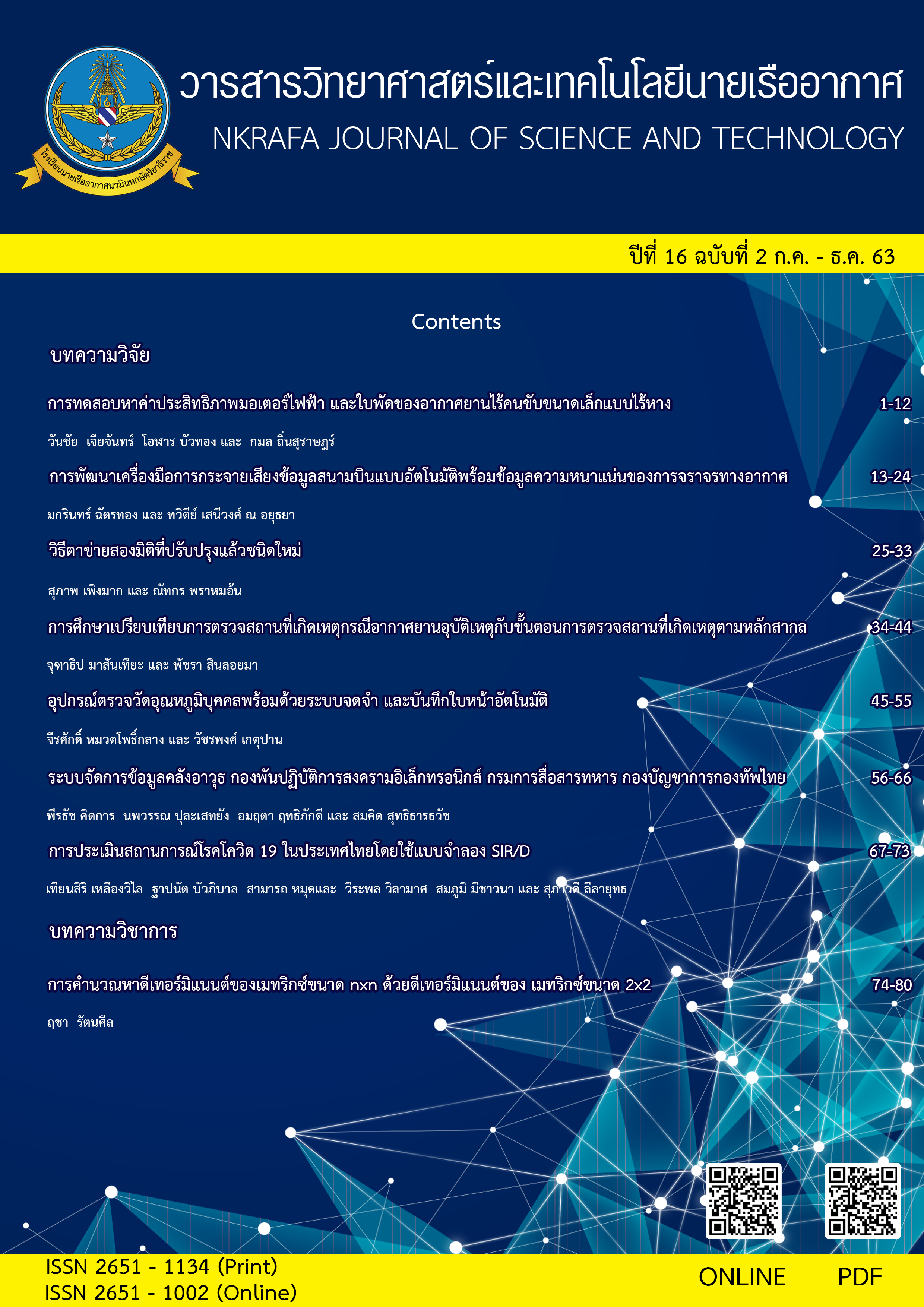Computing the determinant of an nxn matrix with determinant of 2x2 matrix
Main Article Content
Abstract
This paper presents the numerical analysis by evaluating an nxn matrix of Chio’s
condensation method in comparison to Dodgson’s condensation method. The computation for
both methods applies the reduction of (n-1)x(n-1) matrix and finds the determinant of 2x2
matrix. These techniques are different from the commonly practice - reducing an nxn matrix and
spreading cofactors of matrix - using Sarrus’s rule to compute the determinant of 3x3 matrix.
Different methods provide the same result, but each technique is more appropriate to specific
value of elements in varied matrices than any others. This paper will, therefore, demonstrate the
analysis for two means of calculations.
Article Details

This work is licensed under a Creative Commons Attribution-NonCommercial-NoDerivatives 4.0 International License.
- Content and information in articles published in NKRAFA Journal of Science and Technology are comment and responsibility of authors of articles directly. Journal editorial do no need to agree or share any responsibility.
- NKRAFA Journal of Science and Technology Articles holds the copyright of the content, pictures, images etc. which published in it. If any person or agency require to reuse all or some part of articles, the permission must be obtained from the NKRAFA Journal of Science and Technology.
References
Turin: E. Pons, 1853.
[2] H. Eves, Chio’s Expansion, 3.6 in Elementary Matrix Theory, New York: Dover, p. 129-136, 1996.
[3] C. Dodgson, Condensation of Determinants, being a new and brief method for computing their
arithmetic values, Proceeding of the Royal Society of London. Vol. 15, p. 150-155, 1866.
[4] Francine F. Abeles, Dodgson condensation: The historical and mathematical development of an
experimental method, Linear algebra and its applications, p. 429-438, 2008.
[5] Armend Salihu, New method to calculate determinants of n nn 3 matrix, by reducing
determinants to 2nd order, International Journal of Algebra, Vol. 6, no. 19, p. 913-317, 2012.
[6] M. Bayat and H. Teimoori, A new method for computing determinants by reducing the orders
by two, Caspian Journal of Mathematical Sciences (CJMS), p. 16-24, 2018.


